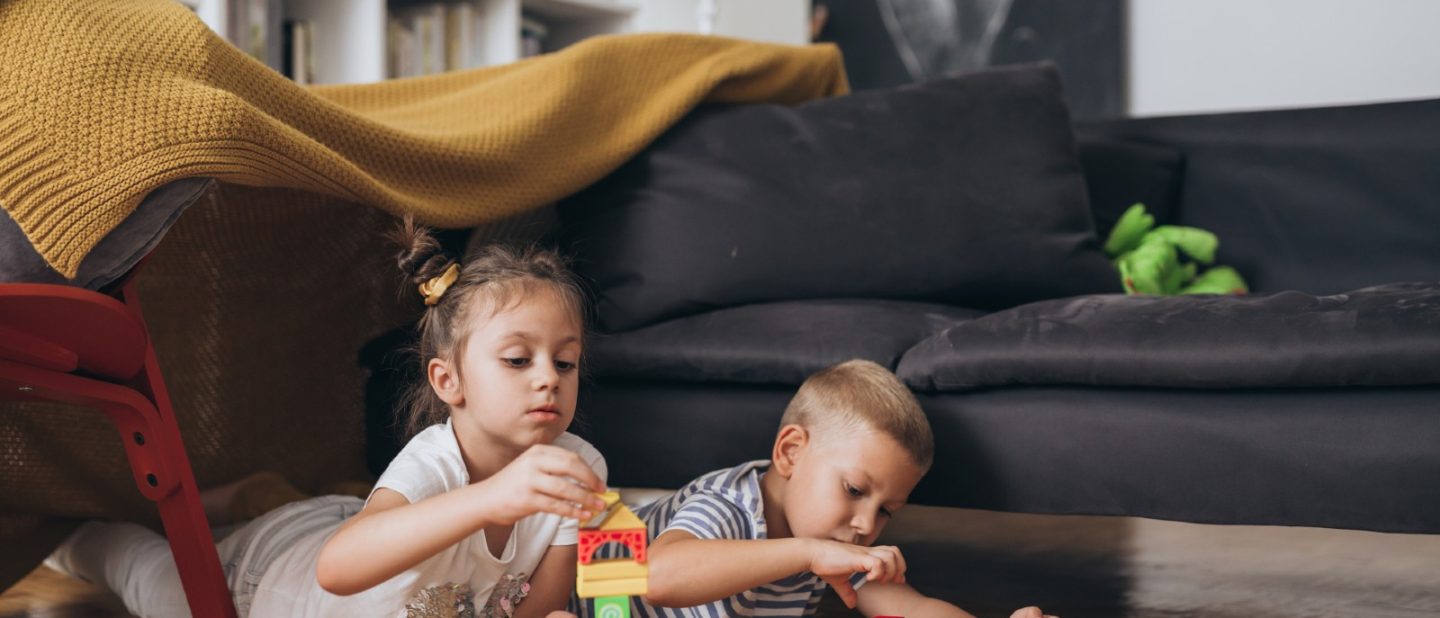
Stay active and engaged indoors. Fun ideas for kids of all abilities
Who doesn’t love a bit of snuggling up on the couch during the colder winter months? However, it’s important to remember that keeping kids active and engaged is still crucial whatever the weather outside. Numerous studies indicate that active play has a positive impact on children’s attitude, cognitive abilities, and academic behaviour.
According to Australia’s Department of Health Guidelines, toddlers and pre-schoolers should aim for a minimum of 180 minutes of physical activity per day, including energetic play.
But what can you do when it’s wet or too cold to venture to the local park?
Don’t worry, we’ve got you covered with a range of indoor play activities suitable for kids of all ages and abilities, including those who use mobility aids like wheelchairs, walkers, or standers.
Scavenger Hunt
Create an indoor scavenger hunt where children search for specific objects or clues around the house. This activity promotes problem-solving skills, attention to detail, and physical movement as they navigate different rooms.
Indoor Bowling
Set up a DIY bowling alley using empty water bottles or plastic cups as pins and a soft ball as the bowling ball. Clear a space in a hallway or living room, and let children take turns rolling the ball and trying to knock down the pins.
Dance or exercise videos
Follow along with dance or exercise videos specifically designed for kids. There are numerous resources available online that offer guided routines suitable for different age groups and abilities. This promotes physical activity, coordination, and rhythm.
Scavenger hunt
Create an indoor scavenger hunt where children search for specific objects or clues around the house. This activity promotes problem-solving skills, attention to detail, and physical movement as they navigate different rooms.
Playing ‘school’
The possibilities are endless when you and your child use your imagination. Playing ‘school’ gets the creative juices flowing. Let your child set up a classroom and create a schedule. If your child doesn’t connect with the idea of a traditional classroom, they could coach you in a sport or activity they feel passionate about.
Activity stations
Indoor activity stations are a great way to keep your children active on a day indoors. Create a number of areas, each one with their own activity, such as skipping, or star jumps, arm pumps, leg lifts or simple stretches. Like a mini boot camp, set a timer, then rotate through the stations one at a time.
Listen to music
Spend an afternoon exploring different genres of music with your child. Talk about the feelings and emotions you both experience as you listen together, and encourage free dance and movement. Aim to match the enthusiasm of your child, as this helps to create an opportunity for deeper connection. To further extend this activity, choose a YouTube tutorial to follow, and you and your children can learn any dance move you choose from history. Whether it’s the Floss or the Moonwalk, there’ll be laughs and fun guaranteed.
Sensory path
Create a sensory path by placing different textured materials on the floor, such as foam mats, carpet squares, or sensory tiles. Incorporate sensory elements like bubble wrap, tactile stepping stones, or fabric tunnels. This provides a stimulating and engaging experience for kids with sensory processing difficulties.
Dance Party/musical statues
Turn up the music and let your kids unleash their energy through dancing. To incorporate listening skills, try playing musical statues. The rules are simple: dance freely while the music plays, and freeze like a statue when it stops.
Sensory play
Create a sensory play area with different textures, colours, and materials. Include items like soft pillows, squishy toys, textured balls, and tactile boards. Sensory play can be enjoyed by all children, regardless of their mobility.
Storytelling and puppetry
Encourage children to engage in storytelling activities using puppets, dolls, or stuffed animals. Provide a variety of props and materials to help them create their own stories and scenarios. This is a great activity for language development and can easily be adapted to include AAC use.
Indoor obstacle courses
Create an indoor obstacle course using cones, tunnels, ramps, and soft play equipment.
With these indoor play activities, you can keep children active, engaged, and entertained even on chilly or rainy days. Whether it’s dancing, sensory experiences, or engaging in imaginative play, there are plenty of options to cater to different interests and abilities. By incorporating these activities, you ensure that children have the opportunity to stay active, enhance their cognitive skills, and have fun regardless of the weather conditions outside.







